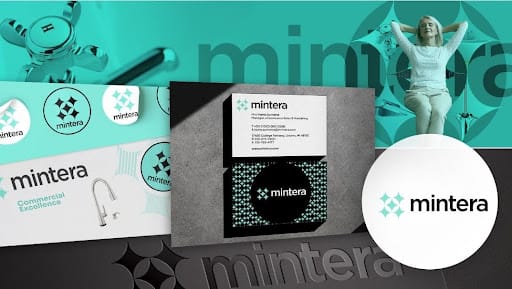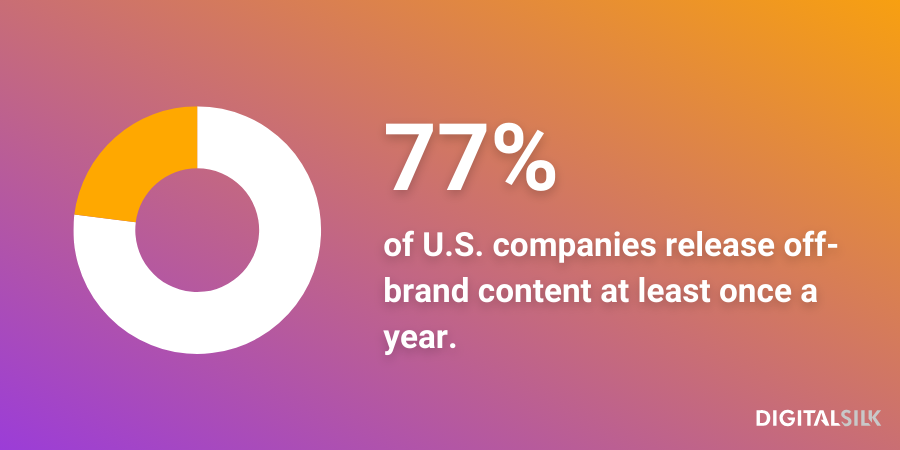Fanta, SmartWater and Costa Coffee seem like three unconnected brands at face value, but they have one thing in common.
They are all owned and operated by the Coca-Cola Company.
The global beverage company uses unique branding for its products to capture greater demand and loyalty from consumers who may not be the Coca-Cola’s primary target audience.
This is just one way to use mixed branding for your business’ products and services.
In our ultimate mixed branding guide, we discuss the definition, types, examples and benefits of using a mixed branding approach.
We also outline a step-by-step process to help you create your own strategy.
[ez-toc]
We create custom brand strategies. Request a Quote
What Is Mixed Branding?
Mixed branding is the brand architecture strategy of using multiple brands to sell overlapping products or services to separate customer segments.
The aim of mixed branding is to appeal to a broader target audience who may not resonate with the parent brand’s identity, style or messaging.
Types Of Mixed Branding
There are several types of mixed branding strategies. Each delivers unique results:
Type 1. Sub-Branding
Sub-branding involves creating a secondary brand within your parent brand. The secondary brand requires a distinct identity to target specific market segments while still relating to your parent brand.
The sub-branding strategy aims to use your parent brand’s value while also catering to unique consumer needs with targeted branding.
Example: Coca-Cola’s Diet Coke
Type 2. Co-Branding
Co-branding uses two or more brand names on a single product or service, combining their identities and resources.
The goal of co-branding is to benefit from the appeal of multiple brands at once, extending each brand’s reach into the other’s market.
Example: McDonald’s McFlurry with OREO Cookies
Type 3. Endorsed Branding
Endorsed branding is when your parent brand lends its name to a variety of products or services without creating a distinct brand for each.
This brand architecture strategy helps build authority and credibility for these products and services, while still appealing to separate market segments.
Example: Kellogg’s Frosted Flakes and Kellogg’s Corn Flakes
Type 4. Private Label Branding
Private label branding is the process of selling a product under the retailer’s brand over the manufacturer’s.
The approach helps to extend the retailer’s offerings and potential cost savings for customers.
Example: Walmart’s Great Value range
Type 5. Location Branding
Location branding involves associating a brand with a specific geographic location.
The strategy aims to link the area’s positive characteristics or reputation with the brand’s products or services.
Example: Patagonia’s name and Mount Fitz Roy logo
3 Top Mixed Branding Examples From Digital Silk
At Digital Silk, our experts use all types of mixed branding techniques to help you expand your market reach.
Three recent mixed branding examples include:
Example 1. Mintera

Mintera is the in-house returned items management unit in Masco, a distributor of home improvement retail products.
We helped the company position this unit as a separate entity that markets returned and refurbished items with an elevated D2C business model.
Our team named the brand Mintera to symbolize mint condition products, as well as delivering a range of brand activation processes to appeal to a new target audience segment for Masco.
Example 2. Dognomics

Dognomics is a DNA test kit product for dogs, powered by genome-based medical and healthcare group Clinomics.
The product is the result of a sub-branding approach.
Dognomics’ DNA tests are clearly connected to the Clinomics brand through its Powered by Clinomics tagline. However, they follow a different brand identity to appeal to their niche target audience.
We created a unique brand strategy, logo design, packaging design and website launch intended to appeal to Dognomics’ target audience.
Our logo design features a DNA double helix to highlight the scientific nature of the product and a heart to showcase the care it provides to customers’ pets.
Meanwhile, a carefully selected color palette symbolizes scientific trust combined with fun and play.
Example 3. Unison

Unison Infrastructure is a global infrastructure acquisition and management company.
The business has a portfolio of location-based brands, including InfraItalia, InfraDeutschland, InfraFrance, InfraEspaña and InfraPolska.
Our team helped Unison establish its brand architecture. We also created consistent style guidelines that can be applied across each of its business units globally.
Using an endorsed branding strategy and providing brand naming, logo design and brand book solutions, we created a connected house of brands for Unison that serve distinct markets while leaning on the core brand’s reputation.
Meet our mixed branding specialists. Schedule A Consultation
Benefits Of Mixed Branding
Introducing a mixed branding approach to your product and service branding can produce many benefits.
Specifically, mixed branding can help you:
1. Enter New Markets
You can penetrate new markets by using different brand names or subsidiaries.
Whether targeting a new location or target audience, mixed branding can help to drive awareness among a range of consumer segments. This will expand your reach beyond your well-established market.
2. Create New Demand
Similarly to how mixed branding helps your business enter new markets, by reaching new sets of customers you can drive demand for your products or solutions.
By using diversified brand names and identities still connected to your core brand, you can attract a wider net of potential consumers than with one narrow branding strategy.
3. Boost Brand Loyalty
Mixed branding can build brand loyalty for your house of brands.
By implementing an endorsed branding strategy, you can deliver a range of products and services that stem from your centralized brand identity. This can help foster brand loyalty as consumers trust your brand name for a variety of unique products or services.
4. Limit Risks
Risk mitigation is a central component of mixed branding, specifically aligned to sub-branding and private label branding techniques.
Launching to new markets under an unattached brand name allows your business to experiment and test different areas without potential failures or setbacks harming your overall brand reputation.
5. Resonate With Current Trends
Mixed branding allows your company to resonate with current trends by adapting to changing consumer preferences and market dynamics.
By leveraging multiple brands, you can stay relevant and align your offerings with the latest trends, ensuring continued consumer interest and engagement.
We’re branding specialists. Schedule A Consultation
How To Create A Mixed Branding Strategy
Creating your mixed branding strategy will depend on both your current brand and the goals you hope to achieve through your new products or services.
Here is a five-step guide to help you navigate the mixed branding journey for your business:
Step 1. Define New Market & Target Audience
To begin your mixed branding process, you need to identify, analyze and understand your new target market and its audience.
Check the B2C individuals or B2B clients linked to the reviews, testimonials and portfolios of existing companies in the market you’re looking to enter.
Once collected, make sure to note:
- Age or size
- Gender
- Income or revenue
- Location
- Lifestyle
- Behaviors or characteristics
- Values
With these, you can build a user persona that fits with your value proposition and new brand targets.
Step 2. Draft Your Mixed Brand Identity
Your type of mixed branding strategy will dictate the brand identity and style of each child brand.
While some brands choose to create a wholly distinct brand and visual identity for a certain product, others will decide to lean on their parent brand’s name, logo and brand associations.
Use the research gathered in step one to help:
- Segment your audience into groups with similarities, such as demographics or consumption habits
- Map your customer journeys depending on what channels your buyers are most likely to use
- Craft a tone of voice that matches that of your consumers, gathered either online or through primary research
- Tailor the visual elements of your mixed brand to your new target audience preferences
Step 3. Build Various Brand Guidelines
Brand guidelines are essential in ensuring consistency and credibility, but they are not always followed.
In fact, 77% of companies release off-brand content at least once a year.

Depending on your type of mixed branding strategy, your various brand guidelines will include similar or completely diverse instructions.
In this step it is crucial to establish comprehensive brand guidelines for each brand. Outline key elements like:
- Logo usage
- Color palette
- Tone of voice
- Brand positioning
- Typography
In turn, you can create consistent designs and brand collateral that build brand recognition and loyalty.
Step 4. Market Your New Brand
Having laid out your brand identity and guidelines, you need to implement a targeted marketing strategy to promote each brand effectively.
Utilize a mix of traditional and digital marketing channels to reach diverse audience segments. These can include:
- Social media marketing
- Email marketing
- Organic search marketing
- Paid media and digital advertising
- Influencer and affiliate marketing
The channels you choose for marketing your brand should be those that your new target audience engages with most.
Step 5. Monitor Brand Performance
Regularly monitor the performance of each brand within the mixed branding strategy.
Analyze key performance indicators (KPIs) such as brand awareness, customer engagement, sales growth and market share to assess the effectiveness of the strategy.
With these insights, you can shape your mixed branding management by deciding which approaches work best with certain markets and how these decisions impact your core brand.
We deliver custom brand architecture solutions. Request a Quote
Manage Your Brands With Digital Silk
When done correctly, mixed branding can help scale your business.
By managing your brand architecture with a mixed branding approach can connect your brand’s products and services with new markets. It can also disconnect your core brand from an underperforming product line.
However, to get the mixed branding process right takes expertise, creativity and knowledge.
At Digital Silk, our in-house team of branding specialists and award-winning designers brings these qualities to every project.
We provide a full suite of branding services to ensure your parent brand, secondary brand of house of brands all meet your unique targets.
Alongside dedicated brand architecture offerings, our team specializes in:
- Brand strategy
- Logo design and style guide design
- Brand naming
- Brand package design
- Rebranding
How do we make sure to provide top-level, consistent solutions to brands across industries?
By focusing on:
- Project ownership
- Transparency
- Measurable results
Tell us about your mixed branding project! Contact us, call us at (800) 206-9413 or fill in the Request a Quote form below.
"*" indicates required fields








